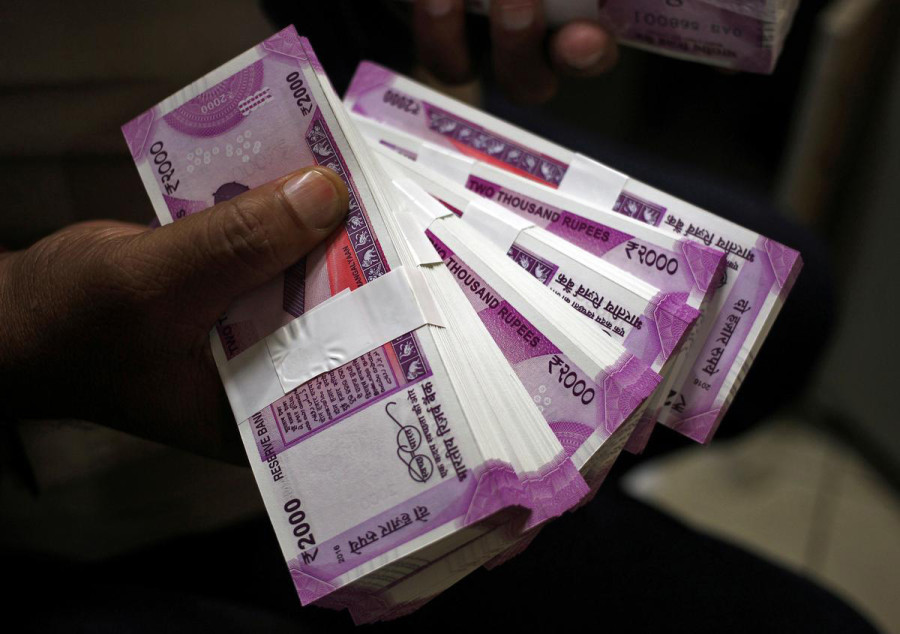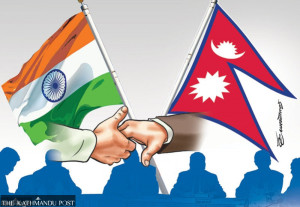Columns
Indian rupee in cross-border trade
The South Asian economies have all the reasons to make the most of India’s new monetary policy.
Atul K Thakur
India’s unwavering commitment to finding a smoother mechanism for cross-border payment settlements in the neighbourhood will now make it possible to lend Indian rupees (INR) to non-residents in Bhutan, Nepal, and Sri Lanka for bilateral trade. A path-breaking initiative of the Reserve Bank of India (RBI) announced during its Monetary Policy Committee (MPC) meeting held on October 1 should pave the way for a simplified trade regime, more so with Nepal, considering its existing complex cross-border payment options for bilateral trade with India and upfront challenges for working capital in the wake of latest political developments in the country.
India has been making steady progress in using the INR for international trade as part of its strategy to gradually internationalise the currency. Now, permission has been granted to Authorised Dealer (AD) banks to lend in INR to non-residents from Bhutan, Nepal and Sri Lanka for cross-border trade transactions. The RBI has permitted wider use of Special Rupee Vostro Account (SRVA) balances by making them eligible for investment in corporate bonds and commercial papers, besides moving to establish transparent reference rates for currencies of India’s major trading partners to facilitate INR-based transactions.
As Trump 2.0 unleashes onslaughts through selective tariffs and transactions, these measures will help reduce dependence on the US dollar and thus safeguard the economy from sudden exchange rate fluctuations and currency crises. These steps will help reduce pressure on forex and keep the current account deficit at a comfortable level. India’s current account deficit moderated to $2.4 billion (0.2 percent of GDP) in Q1:2025-026 as compared with $8.6 billion (0.9 percent of GDP) in Q1:2024-025 due to increased net services surplus and strong remittance receipts despite a higher merchandise trade deficit, RBI Governor Sanjay Malhotra made it a point during the latest monetary policy review.
The slew of measures should have multiplier effects for Bhutan, Nepal and Sri Lanka in further expanding trade terms with India, with a much-needed traction of institutional credit (and without facing any hassle of dollar exchanges) and market access to India. With India’s external sector continuing to be resilient and its domestic macroeconomic fundamentals robust, the South Asian economies have all the reasons to make the most of this new policy.
Apparently, the objective of this latest policy announcement is to minimise the use of crossing currencies, apart from helping INR and the other currency in transactions from these countries. Another significant dimension is to widen the use of balances in SRVAs. These balances, which facilitate trade settlement in local currency, will now be eligible for investment in corporate bonds and commercial papers. In August this year, the RBI had allowed foreign investors to invest their surplus Vostro balances into central government securities.
In the past, the RBI has taken steps that include bilateral agreements for trade settlement in INR, encouraging Indian payment systems like UPI for cross-border transactions, and measures to reduce rupee volatility, making the currency more stable and attractive for international investors and businesses. India Inc is seeing limited impact coming to it with the new policy provisions; however, industry leaders have welcomed the RBI’s latest move, calling it a key step to reduce dollar reliance, boost regional trade and strengthen capital markets.
Going forward, the pressing questions are: How will this impact INR internationalisation? Will it stabilise currency flows? Could it attract greater NRI investments? Considering how unevenly the USD has been dominating international trade, including in India’s neighbourhood, there is no reason to keep any pessimistic views on possibilities. India and its friendly neighbours have much to gain if INR is preferred for bilateral and sub-regional trade.
In Nepal’s policy establishments, the RBI’s decision is being interpreted as India’s bid to strengthen the INR. Also, an allusion is that for Nepali businesses to avail themselves of Indian capital, the Nepal Rastra Bank (NRB) has to first put in place a proper hedging system.
The cases of Bhutan, Nepal and Sri Lanka are not identical vis-à-vis trade and currency arrangements with India. Nepal’s case is unique as it has been availing a one-sided currency peg rate, shielding the Nepali rupee (NPR) from devaluation against the INR. Going forward, there has to be clear answers on: Government of Nepal’s economic ring-fencing; framework of sovereign guarantees (sector/project wise); Country Standby Letters of Credit (SBLC/SLOC); country exposure limit; renegotiation of one sided currency peg rate; reaffirm Country Risk Rating; FATF Grey List; mechanisms for AD banks; direct financing option; subscribing through bonds; who can invest; mechanism for lending to subsidiaries; mechanism for lending to Joint Ventures; and a cushion against provisioning for Expected Credit Loss (ECL) for Indian balance sheets.
Moreover, potential borrowers beyond borders will not skip process compliance as per the RBI guidelines. The RBI has a strong reputation for keeping prudence ahead. The NRB’s reciprocation will herald a new era for rebooting India-Nepal economic ties. India and Nepal should come closer to a level playing field.




 7.12°C Kathmandu
7.12°C Kathmandu















